Interview: Rapid Response to Covid- with Patrick Jansen (VBR Turbine Partners)
As we are are getting better control on the the immediate impact of Covid-19 on our service operations, it is a good time to shift to phase 2: Review...
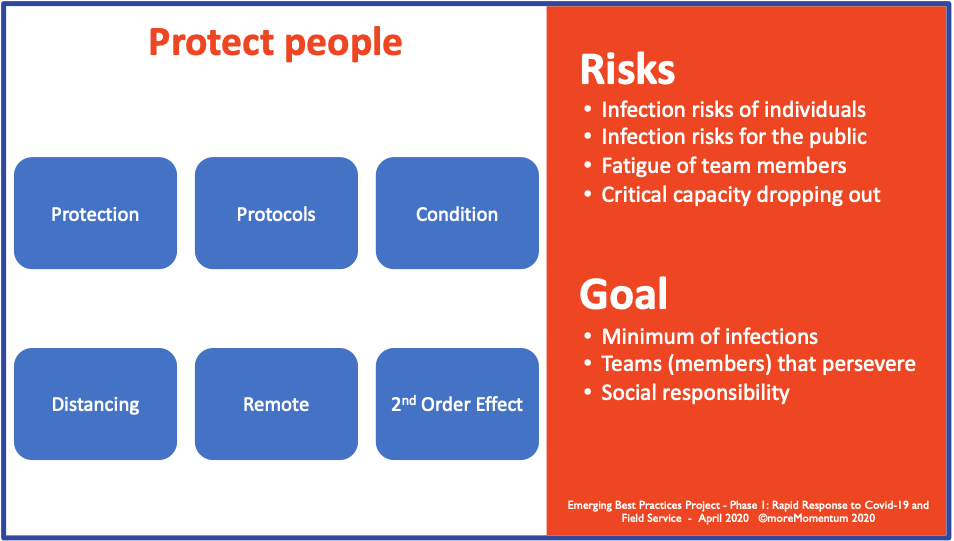
The big challenge is to keep people safe, while continuing social and economic life as much as possible.
So, the real challenge for businesses is:
To mitigate the immediate impact of a crisis like Covid-19, one of the major objectives and challenges is to keep people safe.
This is one of the 3 main sections from the "Ultimate Guide for Phase 1 - Rapid Response to Mitigate the Immediate Impact of Covid"
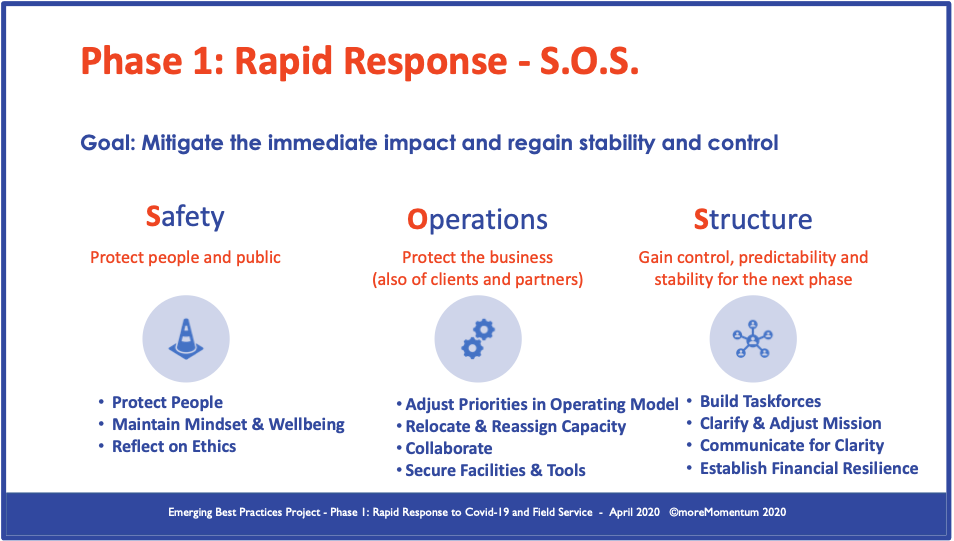
Regarding Protecting People:
Risks to address
Goal
Main aspects
There are circumstances in which team members will have to go to the office, have to go to clients and have to travel. When travelling, they may be in less controlled environments like public transportation, hotels, airports, airplanes and clients’ sites. They will have higher risks of being exposed to infections.
To minimise these risks, they need adequate personal protection, like:
It is important to follow the latest guidelines and instructions of trusted (international) authorities like WHO, national health authorities and national and local governments.
Keep in mind that some team members may be more vulnerable to the virus than others. This may require differentiation in your approach regarding protective gear and work assignments for different levels of potential exposure.
Safety and protection are not only a matter of protective gear. The protective gear must be used in the right way too. Another aspect is the safe behaviour of team members and other individuals your team members interact with, like staff of clients, logistic providers or contractors.
Before sending a team member to a clients’ site, check with the client:
The (local) safety protocols and regulations
If there are any health issues with any of their staff
Any risks for vulnerable staff
Your protocols and safety precautions
How work can be prepared remotely to make the visit on site as short as possible
The best way to achieve that is to:
The COVID-19 crisis is going to last a long time and will be demanding a lot from many people in your organisation.
The risk is that people will:
Take less care of their fitness and condition
Become more vulnerable for other safety risks
Reduce their immunity for any decease
To avoid this, everyone should ensure they:
For the time being, we need to minimise the number of face-2-face interactions. In case these are unavoidable, keep a distance from each other as much as possible. The following practices are being applied:
Work from home when possible
Separate teams that need to work in the office or factory, into 2 or more fixed teams and only allow 1 team at a time in the office or factory. Avoid any interaction between the different teams to avoid infection of other teams if one team member is infected
Distribute workplaces as much as possible to keep the allowable distance
Separate workspaces with fences or screens
Route any human traffic of staff, clients or staff of other companies via screens, fences, arrows or signs
In more crowded places, have “traffic officers” monitor the behaviour of the crowd and intervene if necessary
Push interactions between people (colleagues, clients and others) to remote, virtual or online channels. For example:
Too often we see that an intervention has undesirable (side) effects, making the intervention useless or even counterproductive. Some examples are:
An increase of the number of people at the office because of a prohibition to travel
More crowed trains, because of the reduction of trains on the tracks
Higher risks in the factory because critical staff is now working remotely and therefor makes mistakes
Accidents at clients’ locations because untrained people are taking over tasks of trained service engineers
This should be avoided by:
Download the full Guide for Phase 1 - Rapid Response
Subscribe for the our Impulse Letter
With regular updates about service news, trends and best practices.
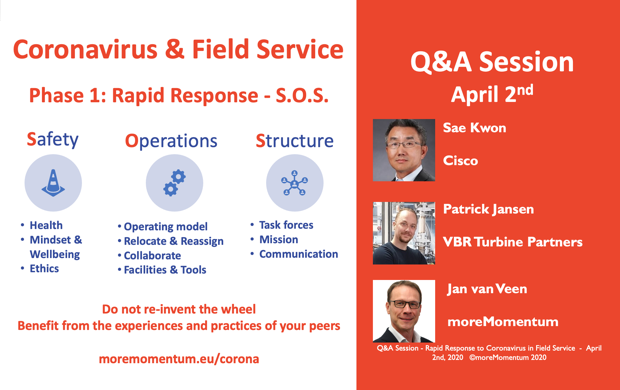
As we are are getting better control on the the immediate impact of Covid-19 on our service operations, it is a good time to shift to phase 2: Review...
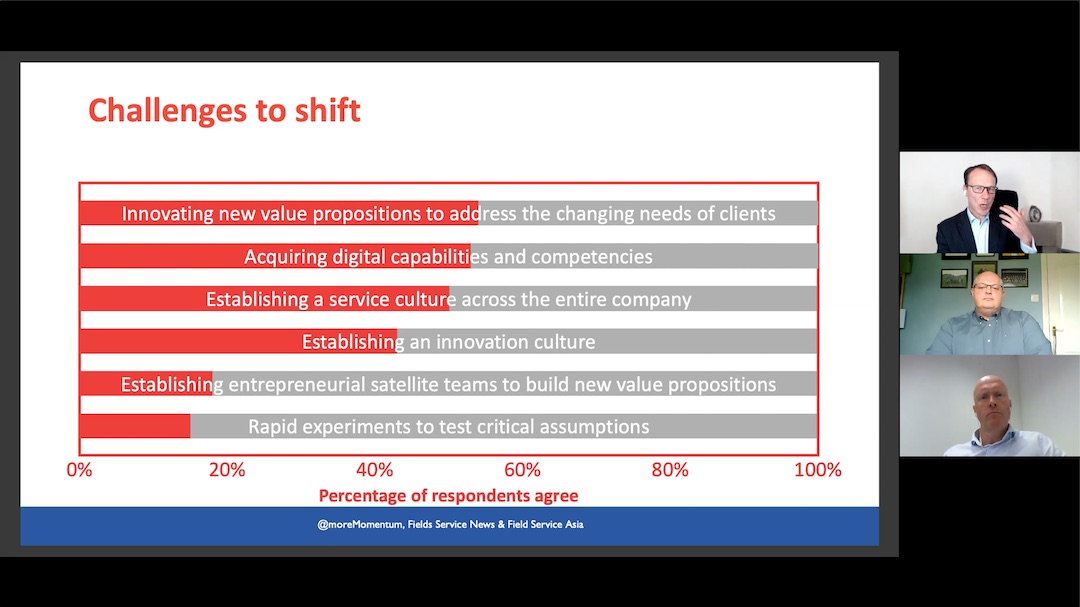
During the Field Service Asia Virtual Event of WBR, we discussed the findings of our research Innovate your way out of the Covid-Crisis. Which is...
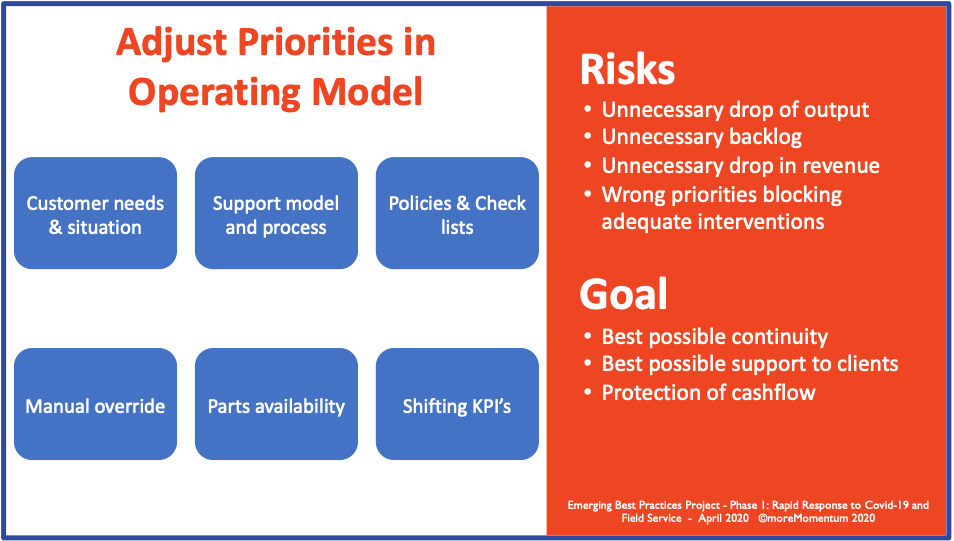
During a crisis many aspects of the normal way of working will not be adequate to continue business, or may simply not be possible to continue. Phase...